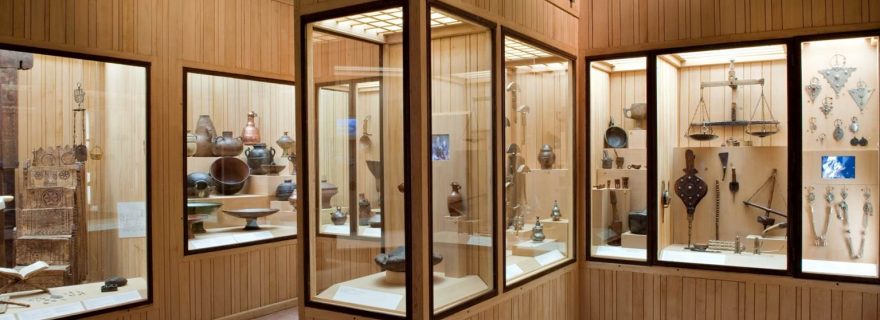Berber by the book
Recent policy shifts aim at including the Berbers of Morocco into Moroccan society. But what it means to be Berber in Morocco today is complicated by Morocco’s colonial past. Museums are an illustration of this dilemma.
Never judge a book by its cover. ‘Scratch a Moroccan, find a Berber,’ was the famous article title in 1999 by American anthropologist David Hart, who spent most of his life studying Berber communities in Morocco. Until well into the seventies, anthropologists and historians underestimated the significance of Berber ethnic sentiment among Moroccans. More importantly, they underestimated the Berber elite’s capacity to reclaim this identity as a basic component of Moroccan national identity.
Cultural identity
The French notoriously stressed ethnic and cultural differences between Arabs and Berbers during the Protectorate days (1912-1956) of the Maghreb countries in order to facilitate their colonial mission. They viewed the Berbers as France’s distant cousins, as a democratic and secular people who, as opposed to Arabs, could be integrated into French society.
But after independence, Morocco defined itself as an Arab and Islamic nation, strategically obscuring the region’s pre-Islamic and Berber past. By stressing Islam as a crucial unifying aspect of national identity, Morocco’s Arab nationalist elites tried to do away with the country’s colonial legacy.
Arab Spring
Much has changed since then. Global media activism and the more recent revolutions in the Middle East and North Africa have turned the national Berber issue into a pressing matter. In regions where Berber is the dominant language, protests were often also inspired by ethnic sentiments. On several occasions throughout his rule, Moroccan king Mohamed VI has openly acknowledged Berber culture as part of national heritage.
In 2011, Berber languages were officially recognized in the Moroccan constitution, necessitating the construction of a Berber identity that fits within a national identity that now relies not only on Arabism and Islam, but also on Berber heritage and culture. This is by no means an easy task given the state’s previous neglect of its cultural infrastructure. Who are the Berbers and how should they be portrayed in and by institutions that contribute to identity making?
Perhaps it should come as no surprise that 2011 also marked a turning point in Moroccan cultural policy. Most of Morocco’s current museums were built by the French, where colonial administrators differentiated between ‘Arab’ and ‘Berber’ objects. Because museums were neglected after independence as relics of a colonial past, these binary categories continued to underscore displays, albeit without explicit references to Berber culture. An object labeled ‘traditional’ or ‘rural’ in a museum display in Morocco was likely once framed as ‘Berber’ by a French anthropologist. The National Museum Foundation that preserves and manages the country’s fourteen national museums now plans to correct this interpretation of national history and culture by erecting a museum on Berber culture in the capital.
Colonial past
But the Moroccan government is not the only actor in the cultural policy shifts. Private institutions have also tackled the Berber issue. French private foundations have done so by investing in Berber museums big and small, most notably in tourist areas. In such settings, museums create the impression that Berber culture underwrites all of Moroccan culture. They also seem to suggest that Berbers adhere to a ‘tolerant’ Islam quite distinct from its Arab counterpart. But this representation is highly problematic because it relies on a memory that is rooted in colonial history, and is steeped in a troublesome view of Islam.
French colonial administrators were convinced that Islam kept local populations from further development. Their interpretations of religious and social identifications among local populations were greatly influenced by French ethnologists’ work that had by then been collected in French Algeria, where racism was rampant. This created a French view of Berbers being superior to the Arabs because the Berbers were less (fervently) religious. This view has become known as the mythe berbère.
The ‘tolerant and secular’ Berber
Both state and private actors have made this kind of tolerant and secular berberité into the main and dominant mode of cultural consumption, in particular within contexts of mass tourism. Such fixed and static representations tend to ignore the everyday identity as it is lived out in interaction, which is far more flexible.
Long forgotten are the French colonial ethnographers who stressed cultural and religious hybridity in the region, who wrote about the Maghreb as a crossroads and who challenged the colonial ideology of clear-cut and fixed differences. Perhaps, in their spirit, we should no longer ponder on who the Berbers of Morocco are and should be, but rather on why we have come to think of them as the Arab’s and Muslim’s other.
This blog post is based on research funded by a Catharine van Tussenbroek Fellowship and a travel grant from the Lutfia Rabbani Foundation.



1 Comment
Zeer compact! Maar goed verhaal.